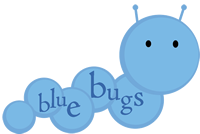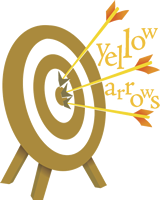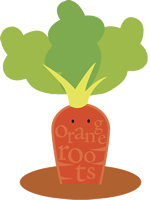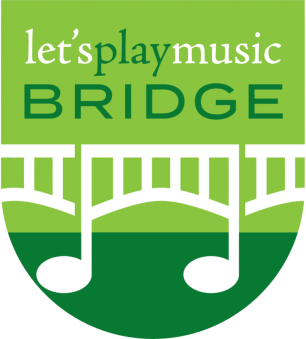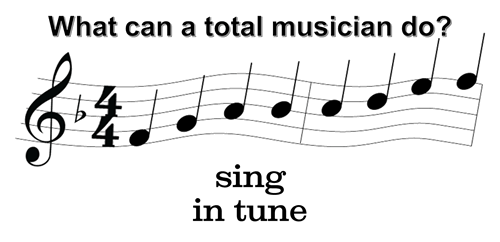|
Here you can find all the information for the classes each week!
|
Blue Bugs #2
Tuesday, January 14, 2025 | Blue Bugs Lessons

Lesson #2
Once again, we had a great week. I just love my 1st year students! They are smart and so fun. Just a reminder parents come next week with tote bags, bells, and home fun activity books! Also, the home fun activity goes with whatever lesson # we JUST DID in class. So this week the kids will do #2.Thank you for helping them each week!
If you haven't yet, check out this virtual escape room:
https://escaperoomlpm.wixsite.com/magicallamp
This is a great review for what we learned in Red Balloons. If they are struggling with any of the concepts, this will help you identify them and work with them. Or ask me for help if needed!
The kids are very used to me by now and I hope, feel quite comfortable. I am starting to watch them more closely and can see that you parents are doing such a great job helping them. Thank you for doing this. Thank you for making their education a priority. If you’re child isn’t quite singing on pitch yet, don’t despair, it will come. One of the best ways to get them to hear it is to have them sing. That is why in class I keep telling them to sing with me. Even if they aren’t right on they should sing, sing, sing. As nonsensical as it sounds, singing out loud is one of the keys to hearing it inside.
Bug Rhythms
The song “Can’t Bug Me” is the foundational song for counting our rhythms. We'll be using these bugs for the rest of the curriculum. This will become second nature very quickly! Have fun clapping to your bug cards!
Meet the Blue Bugs... enjoy reading about why we use rhythm syllables in Let's Play Music.
(If you check out this link and you like the "food language" chart in the middle, just know that I've created a game with that! I'll share it in a few weeks, after the kids are more familiar with the rhythms.)
Here is a link to all the skills videos as well as the link to be able to purchase a class video to make up for a missed class. (tap or scan)
Have a musical day!
-Ms. Bethany :)
Bridge #24
Thursday, January 9, 2025 | Bridge Lessons
|
Here is what we did in class this week:
This week your child will do the red and purple highlighted assignments at home! Parents need to initial completed assignments this week in order for the kids to get their reward in class!
I have added additional flashcards to my Quizlet collection. You can access those on my website, or through Quizlet.com. I have also added a few sets to the "Repertoire" section of the Student Portal. Please let me know if you are using these resources and I will continue adding to it! Also let me know if you can't get them to work! (Sometimes things work fine for me as the teacher, but not so well for the students and I have no way of knowing if nobody tells me they aren't working!)
Don't forget to please help your child pass off their songs and scales to earn pins! You just need to send me a video of them playing. The scales can be played with or without the back track, but they need to be perfect at least one time with both hands.
I'm getting a lot more pass-off lately! Keep it up! Please let me know if you have any questions!
Have a musical day!
|
|
|
Yellow Arrows #1
Thursday, January 9, 2025 | Yellow Arrows Lessons

Lesson #1

What a great class this week! We learned so many new things and reviewed many others. Remember, tuition is due if you didn't pay for the whole year up front. Please be sure to look at the calendar in your student portal so you can be aware when scheduling for parent days. Remember, to access your student portal, go to www.musikandme.com and find the login section (either on the right if using a computer, or the bottom if you're on a phone). Once you're logged in with your username and password, click the calendar icon on the left (3rd icon down). You can sync it to your own digital personal calendar too!
If your child wants to still work on the Christmas Break Challenge this week, I'll still give out rewards next week, if they bring it back signed!
Don't forget that the keyboard stickers are like training wheels. Once the children know where your fingers should go, they don't need them anymore! Left Hand Red Sticker PlacementIf your child needs to use the right hand stickers a few more practices, that is fine, but please remove them before next class! (Although the electrical tape stickers I gave you should come off clean, Goo Gone can get any leftover residue if there is any.) Now that we're learning to use our left hand, you may add your RED chord stickers for the LEFT HAND! We will hold off on the blue and yellow chords for now.

Tuition is due this week and is $280 for the Yellow Arrows semester. You can pay via Zelle using my phone number (preferred, so I don't have to pay Venmo transaction fees). Zelle is a way to transfer money from your bank account to my bank account without needing to wait or pay extra fees. It's easy to set up through your bank and even easier to use once it has been set up. You could pay via Venmo @musikandme if you really can't set up Zelle. If you need to make monthly payments, rather than paying for the semester, it will be $75/month. (You will save $20 by paying for the semester up front!)
Celebrate Connection
A new semester and a fresh start! Focus on making practice time as fun and loving as possible – give your child warm, friendly eye contact, smile with your voice, be a little silly, show you are relaxed and happy to sit with your child, and look for the good in your child's effort. Notice the joy in your child's eyes. Verbalize the good you see and hug your child often. This is the beginning of the practice relationship that will be essential to your child's success in Let's Play Music. The more you invest your energy into positive interaction, the more solid and successful this habit will become.
After doing your assignment for class, allow your child to fool around and experiment if he wants to, and play a song he knows -- no matter how simple. This can be done anytime or multiple times throughout the week. Model joy as YOU play the piano. If you make a mistake, smile and show that you are relaxed and enjoy trying again to fix the mistake. Celebrate your effort to give him the idea his efforts are something to enjoy and celebrate.
A few ideas to bring playfulness to practice time!
- Pull out the bells from last year and notice how fun it is to play some of the Yellow Arrows songs on the bells.
- Any chance you get, have visitors listen to your child play his/her favorite song at the piano and applaud generously! As a family, sing along with the songs.
- Can you collaborate with your child at the piano, a parent duet, someone on the Let's Play Music bells from last year and someone else playing a shaker or simply singing along? THIS is joy for your child when it is done with emotional safety and celebration!

Left Hand Finger Power through Bubble Hands & Turtle Shells
This semester we will focus on strengthening our LEFT HAND finger muscles! Playing Bubble Hands in numerical order on the keyboard is a great way to strengthen and reinforce finger numbers. "Pinky's 5, Ring is 4, Middle's 3, Pointer's 2, and Thumb is 1." LH pinky is on C, the bottom red dot. After your child is confident with the finger numbers in order, mix it up to cement this concept with the Left Hand! Also, you can log in to your student portal and download the "Finger Numbers Matching Game" that I created for my daughter when she didn't want to do "Let's Play Music" homework. (The best part about it was that she didn't even realize she was learning...we were just playing a game!)
Playing Turtle Shells with the CD will ALSO help strengthen those fingers. Look closely at the music on the page and it will help you know what finger numbers to play. Hold each interval down the entire time you are singing until the next interval. It will be tricky at first, but with a little practice, it will become easy!
Do You Want To Build a Red Snowman?
The Left Hand Red Chord looks the very same on the staff: stacked up nice and neat with a 3rd on the bottom and a 3rd on the top in a snowman shape. We PLAY the red chord with our left hand finger numbers 5-3-1 (finger #5 on bass C, the bottom red dot). Invite your little musician to play Old Paint with the left hand this week! They’ll be thrilled to play a song they already know, PLUS they will be strengthening their fingers! Double bonus!
The Caterpillar Song
The proper hand position for this technique song is Middle C Position where both thumbs SHARE Middle C like a BUTTERFLY! This week work on coordinating both hands at once by singing finger numbers SLOWLY until they get the hang of this 5 finger pattern. Then add the lyrics.

Since both red chords are shaped like a snowman, how do we know which hand to play it with? By looking at which CLEF is on the staff.

The TREBLE CLEF has a lot of curls, like "Girls Curly Hair," (say it in a high pitched voice because those are the high notes that we play with our right hand). Don't pull her hair or you'll get in "TREBLE!"
The BASS CLEF looks like "Father's Strong Arm and some father's like to play bass-ball!" (say it in a deep voice because those are the low notes that we play with our left hand).

Also, I've added the Pirate Ship puppets for you to download. Log in at www.musikandme.com and you can download and print and let your child color the characters as you discuss their favorite part about the puppet show! (Don't forget to listen to the music while coloring!)
Here is a link to all the skills videos as well as the link to be able to purchase a class video to make up for a missed class. (tap or scan)
Have a musical day!
-Ms. Bethany :)
Pink Piggies #1
Wednesday, January 8, 2025 | Pink Piggies Lessons
Lesson #1

Our first Pink Piggies class was a great start to a semester of fun and learning! These simple reminders will help make class a successful and enjoyable experience for all:
- Please keep all materials (workbook, finger cymbals, and class manipulatives) in your tote bag to bring to class each week.
- Please leave food, drinks and toys at home, in your car, or upstairs. They are a distraction to your own child as well as others in the class.
- Please turn off your cell phone during class. Remember, parent bonding is one of the best features of this class!
- Please utilize the “break area” (the hallway by the bathroom) if your child becomes fussy or disruptive.
- Feel free to contact me with any questions you may have throughout the semester.
- Please be sure to download and listen to your class music on the LPM app!
 The more familiar you and your child are with the music, the more you can both participate in class!
The more familiar you and your child are with the music, the more you can both participate in class! - Tuition is due this week. I prefer payment via Zelle (just use my phone number) because I don't have to pay fees for that, or you may pay with Venmo (@musikandme), which does charge me a small fee, but either one is fine. Tuition is $180 for one student and $220 for a family with more than one child. If you have to make monthly payments, it is $45 for one student and $55 for a family with more than one child.
What songs should you listen to at home each week? I'll let you know here in case you want to be ready with the ones we'll use next class. The more familiar you and your child are with the songs, the more fun you will have in class! Each week we will sing these songs:
- Everybody Say Hello
- ABC Song
- The Letter of the Day
- Everybody Say Goodbye
Next week we'll sing these:
- Name, Name, What's Your Name?
- Let's Count Our Money
- In My Class I Have Some Bells
- Picaflor
- This Little Piggy
- Fiddle-I-Fee
- Uno, Dos, Tres
- March of the Toreadors
- A Rum Sum Sum
- Hush Little Baby

Throughout the semester, Sound Beginnings will introduce several kindergarten concepts. We begin with name recognition because children’s names have more meaning and importance to them than other words. Name recognition is foundational to further literacy skills, and your student will have an opportunity to practice this important concept each week.
Optional home fun activity: Do the Name Recognition activity on page 20 of your workbook
(Remember, these activities are optional but can be a great bonding experience to do with your child during the week.)
Here is a video that will help you to know what Sound Beginnings is all about and how it will benefit your child. This was created by another teacher and she was generous enough to share it!
Here's a fun video for ideas of how to interact with your baby during class (if applicable):
Have a musical day!
-Ms. Bethany :)
Orange Roots #1
Tuesday, January 7, 2025 | Orange Roots Lessons


Lesson #1

What a great first lesson! There is always so much info to pack in while I have you in class once a month! Thank you for coming! In class we signed up for the times when we will do our private lessons on weeks 6 and 11. If you weren't there, I'll text you with the remaining times available and you can let me know what works for you.
Please check the calendar in your student portal so you can be sure you are scheduling parent days in the right places! You can sync the calendar to your google calendar or whichever digital calendar you use. If I need to make any changes, I'll text you to let you know.
Our last semester of Let’s Play Music is packed with amazing musical concepts that some kids will get in middle and high school music classes, if they are lucky! This is going to be an amazing ride as we make skipping snakes, play with the roots of chords, build triads, compose a song, add to our musical repertoire, and much, much more.
Because we are moving right along now, my hope is that you will continue to put highest priority on your practice time. Each week we will be building on concepts and skills practiced the previous week. Of course, we have been doing this all along in the other LPM semesters. However, if the students get behind this semester, they will most likely feel lost rather quickly. As a result, they won’t feel happy going to class because they won’t know the material and won’t have practiced the songs. This will quickly lead to frustration and unhappy students. We’d like to avoid this from the start, by putting highest priority on practice from the beginning. This will eliminate much of the distress that could develop because of neglected practice.
More than any other semester, the music has lyrics that will really help teach musical concepts. There are way fewer songs, but that is because they are very important! Be sure to listen to the class music with your child so you can know how to help!

Tuition is due this week and is $280 for the Orange Roots semester. You can pay via Zelle using my phone number (preferred, so I don't have to pay Venmo transaction fees). Zelle is a way to transfer money from your bank account to my bank account without needing to wait or pay extra fees. It's easy to set up through your bank and even easier to use once it has been set up. You could pay via Venmo @musikandme if you really can't set up Zelle. If you need to make monthly payments, rather than paying for the semester, it will be $75/month. (You will save $20 by paying for the semester up front!)
Celebrate Connection
Think of ways you can focus on making practice time as fun as possible – give your child warm, friendly eye contact, smile with your voice, be a little silly, show you are relaxed and happy to sit with your child, and look for the good in your child's effort. Notice the joy in your child's eyes. Verbalize the good you see and hug your child often. This practice relationship will be essential to your child's success in Let's Play Music. The more you invest your energy into positive interaction, the more solid and successful this habit will become.
After doing your assignment for class, allow your child to fool around and experiment if he wants to, and play a song he knows -- no matter how simple. This can be done anytime or multiple times throughout the week. Model joy as you play the piano. If you make a mistake, smile and show that you are relaxed and enjoy trying again to fix the mistake. Celebrate your effort to give him the idea his efforts are something to enjoy and celebrate.

Primary Root Chords Song
Wow! We had to do some hard thinking during class with this song. Playing our old familiar song in a new way is helping us understand that root and how to play chords when they are in root position. We are jumping all over the keyboard to play this song, but don't forget, to play these root position chords you simply put your thumb on the root and then play what 'feels' like a red chord.
Cockles and Mussels
Our first repertoire song this semester is an old Irish folk song from the 1800s. This week, we are focusing on learning the melody. The fun part of this song comes soon, when we look at the ROOT position chords in the left hand. This piece allows us to strengthen our fingers as hands play together, tests our sight reading skills, and gives us the opportunity to improvise with a broken chord variation. Ha ha! Is there anything it doesn't do??? Our Let's Play Music blog has a great post with fun facts and practice videos dedicated to our new 'Cockles and Mussels' repertoire piece. Gather the family together and enjoy!
Let's Find the Root
Ever wonder why we learn so much about chords in Let's Play Music? Chords are the building blocks of songs and harmonies. In our 6th and final Orange Roots semester, we will finally analyze and label the chord theory and structure that our fingers have been playing and singing since we were Red Balloons! The idea of 'it's not about the shape, it's about the pieces' will take on new meaning as we label those pieces and discover the most important of those pieces-- the ROOT! Don your sunglasses, and keep it cool while you sing 'Let's Find the Root' to understand what the root is, and how to find it in our chords! In case this feels a little foreign to you, I have added a couple pages to the online resources in the Student Portal: There is a parent help that dissects the lyrics to Let's Find the Root with visual examples and simple explanations to better help you understand the theory concepts I am teaching in class. There is also a Parent Theory Note that has a little more info and explains things a little differently. Please ask me if you need ANY clarification on these. This video is good at explaining how our chords can be rearranged to be in root position, but still be red, blue and yellow chords.

As you start out this year, check out this practice tip from our Let's Play Music Blog. Here's a little 'practice humor' for you, just for fun!

Also, the Monsters puppet show puppets are in your book now, but if you'd like you can also download them and print them from your student portal! Log in at www.musikandme.com and you can download, print and let your child color the characters as you discuss their favorite part about the puppet show! (Can you hear the characters that you are coloring?)
Here is a link to all the skills videos as well as the link to be able to purchase a class video to make up for a missed class. (tap or scan)
Have a musical day!
-Ms. Bethany :)


